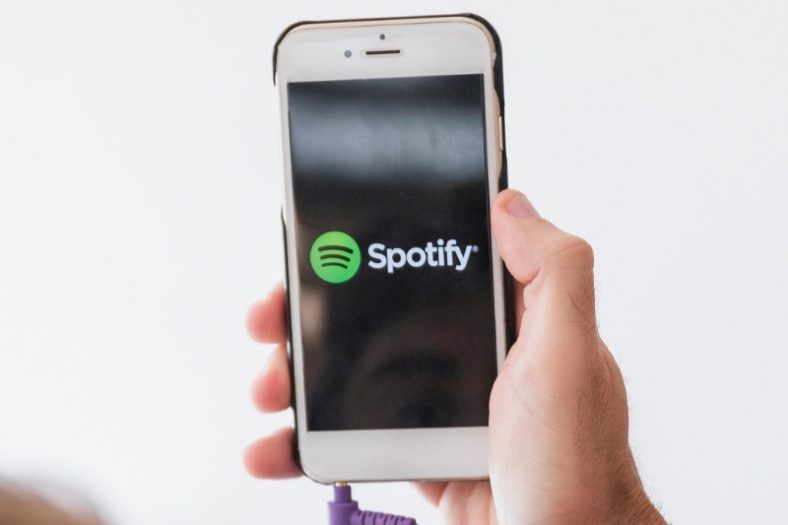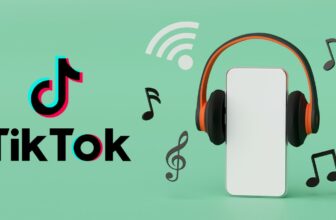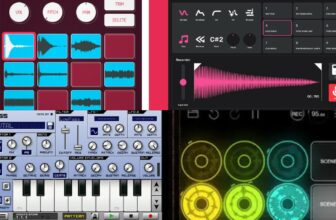Tidal vs Spotify – Which is Better?

Tidal and Spotify are two of the best streaming services around and both should fit the needs of any music listener. Tidal is better than Spotify when it comes to its superior streaming quality, however Spotify has a free plan and arguably has slightly better discovery features on its premium plan.
These two giants of the streaming industry are very hard to separate. While Spotify is far more popular than Tidal, the latter seems to have been specifically designed to match Spotify’s top features with an added focus on Hi-Res audio. Needless to say, Tidal makes for a worthy rival of the world’s best music streaming service.
Choosing between the two is up to each listener’s priorities. If sound quality and artist remuneration is something you care deeply about, then Tidal should be the best streaming service for you. If ease of use, affordability, and very high compatibility are on your top-priorities list, then Spotify has got you covered.
To see how Spotify compares with other popular streaming platforms around, check out our Spotify vs. Apple Music and Spotify vs. YouTube Music reviews.
Contents
Pricing & Free Plans
Spotify takes the lead here. While the basic subscription plans of Spotify and Tidal both cost $9.99 per month in the United States, you need to pay $19.99 per month to have access to Tidal’s HiFi music library of Free Lossless Audio Codec (FLAC) files.
Disappointingly, Tidal also misses out on a cohesive annual plan. While Spotify Premium can be yours for a year for the price of $99, Tidal’s annual subscription of $79.99 ($119.99 if you want access to those sweet FLAC audio files) is only available if you buy some qualifying third-party products – a consequence of their partnership with the consumer electronics retailer Best Buy. Naturally, their Family Plans differ as well.
For users who don’t want to spend a dime, Spotify is also the best option. While annoying ads are all you have to endure if you want to use Spotify for free forever, Tidal’s free plan lasts a mere 30 days, hardly enough time to explore a fraction of their huge music library.
This table sums up Spotify’s superior pricing and free plans quite clearly:
| Tidal | Spotify | |
| Free plan | Limited to 30 days | Unlimited (with ads) |
| Monthly subscription | $9.99 $19.99 (premium) | $9.99 |
| Annual subscription | $79.99 $119.99 (premium) Only available via qualifying third-party products | $99 |
Streaming Quality
There’s no question about this one: superior streaming quality is pretty much Tidal’s whole business model, and they deliver on that promise. It sure doesn’t help that Spotify’s Hi-Fi version continues not to be available to users despite being “almost out” since February 2021.
The fact that Spotify is the streaming platform with the largest user base in the world only makes it even more unbelievable that its highest-quality music tracks play at a disappointing 320kbps. Believe it or not, some of the songs in Spotify’s music library don’t go past 128kbps, a level of music compression most listeners haven’t been forced to deal with since the long-gone days of the portable MP4 player.
Tidal, on the other hand, provides its premium subscribers with lossless FLAC files and streams at a maximum CD-quality of 1411kbps. Tidal’s extensive, high-fidelity music catalog is any audiophile’s dream, so don’t hesitate in spending a bit extra if you’re after master quality sound. Naturally, you would need good speakers or headphones to process the HiFi tier audio.
Music Catalog
This battle also goes to Tidal, but the difference between the two streaming services is minimum here. While Tidal is lightyears ahead of Spotify when it comes to streaming quality, its music catalog beats Spotify’s on what feels like a mere technicality.
According to their official websites, Tidal and Spotify have a music library of “90 million songs” and “more than 80 million songs” respectively. The difference is that Tidal also provides access to more than 450.000 high-quality music videos, which comes in handy if you enjoy looking at something while listening to your favorite artists.
On the other hand, Spotify does have an extensive podcast library. The most popular and probably well-known is the Joe Rogan Experience, which does have a video feature (even on the mobile app for iOS and Android).
User Experience
User experience is always relative, but it’s fair to call it a draw in this one. Browsing Tidal and Spotify is very similar, as the two streaming platforms rely on identical interfaces. They use intuitive and elegant designs that should be easy to navigate, even for tech beginners. Their desktop apps’ search and sidebar menus aren’t distinguishable in any meaningful way.
To give credit where credit’s due, I would state that Spotify deserves to take the lead simply because its design clearly inspired Tidal’s. In other words, they were there first. But to avoid splitting hairs, let’s just say that there’s nothing of substance separating Tidal and Spotify’s user experience.
Music Discovery
While Tidal and Spotify’s recommendation algorithms are surely different, they are quite similar – they won’t be right all the time, but they will help you to find tons of cool new music if you give them a chance.
I feel that Spotify has a slightly better music discovery and recommendation engine in comparison to Tidal, but it’s quite a matter of personal preference.
Both streaming services have solid new playlists coming out daily and feature excellent personalized mixes such as ‘My Daily Discovery’ and ‘Mixes for You’ (for Tidal) and ‘Discover Weekly’ and ‘Release Radar’ (for Spotify). You can easily discover new albums, genres, and artists.
Tidal and Spotify playlists can be embedded into the most popular social media platforms effortlessly (facebook, instagram, etc.), meaning you can easily share new musical discoveries with friends.
Compatibility
Tidal and Spotify’s compatibility shouldn’t let anyone down, as you can use both streaming services pretty much anywhere. They’re both available for Google Chromecast, Apple AirPlay, most smart TVs (the Tidal app is even a built-in feature on AndroidTV), most smartwatches, and even multi-room music systems such as the Sonos System.
Gaming consoles are the one difference maker. While Spotify runs effortlessly on Sony and Microsoft consoles, Tidal is yet to make a real investment in the gaming world. If listening to your favorite artists while playing Playstation or Xbox is your thing, this may pose a problem.
Lyrics
When it comes to lyrics, Spotify has a slight advantage over Tidal, mainly due to the integration of a Karaoke Mode that’s great for house parties and to have fun singing along to your favorite tunes.
It’s the one detail that sets Tidal and Spotify apart, as both have a very decent library of lyrics to go with their songs. On both streaming platforms, lyrics may not always be available, work perfectly, or fit 100% right with the words of the music but that’s the forgivable consequence of trying to put words into more than 80 million music tracks.
Offline Listening
This one’s an adamant draw, as there’s no difference in value in the offline listening provided by Tidal and Spotify. In both cases, you can download tracks and listen to them later on your devices without being connected to the web. However, you need to get a paid license before being authorized to make downloads.
Who Pays Artists More?
It sounds redundant, but I will say it anyway: if it wasn’t for the music artists, there would be no Tidal and Spotify. If giving the creators what’s rightfully theirs is something you value highly as a music listener, I’d recommend you to get a Tidal subscription.
The pay-per-stream (PPS) value associated with all streaming platforms varies extensively according to many factors, but there’s no doubt that Tidal rewards its artists more fairly than Spotify does. While Tidal pays an estimated $0.0125 per stream to artists, Spotify’s PPS sits at a disappointing $0.0043. This means that a musician needs to get 229 plays on Spotify to make $1 while a mere 80 should be enough to get the same amount on Tidal.
To learn more, check out our article about how much spotify pays artists.
Verdict
After analyzing all the major aspects that set Tidal and Spotify apart, these are my conclusions:
| Tidal | Spotify | |
| Free plans | ☓ | ✓ |
| Pricing | ☓ | ✓ |
| Streaming quality | ✓ | ☓ |
| Music catalog | ✓ | ☓ |
| User experience | DRAW | DRAW |
| Music discovery | ☓ | Slightly in favour of Spotify |
| Compatibility | ☓ | ✓ |
| Lyrics | ☓ | ✓ |
| Offline listening | DRAW | DRAW |
| Artist remuneration | ✓ | ☓ |
If you can spare a few extra dollars to pay for a premium Tidal subscription with access to FLAC files, I’d advise you to do so. Streaming audio quality is one of the most important features of any streaming service and, arguably, the one aspect that impacts the music-listening experience the most.
Audiophiles, professional musicians, hardcore music fans, and pretty much anyone who already owns an expensive sound system should go for Tidal instead of Spotify based on this factor alone. That’s not to say Tidal is fundamentally superior to Spotify.
If you don’t want to spend a dime on a streaming service, then Spotify is not just your best option but your only option once Tidal’s 30-day test period is over. It’s also great that Spotify features a $99-per-year subscription plan, while Tidal’s annual price is overly complicated and inexplicably tied to unrelated purchases you have to make on Best Buy.
Access to close to half a million high-quality music videos on Tidal is a great feature, but is it enough to convince gamers to opt for a streaming service that’s not available on any mainstream console? I guess that it’s not.
On the other hand, Tidal is much fairer to artists, the people who really matter in all of this, than Spotify. Tidal is one of just two major streaming platforms in the world where creators earn more than one cent per play: this means that you’re meaningfully supporting your favorite artists when you stream them on Tidal, something that doesn’t quite happen in Spotify.
In the end, it’s up to you to choose the streaming service that suits your needs the most. However, I believe this comparative guide should help you to see the stronger and weaker aspects of each streaming platform. As a final remark, I would like to state that, despite their flaws, both Tidal and Spotify are among the best music-listening apps in the market right now.





